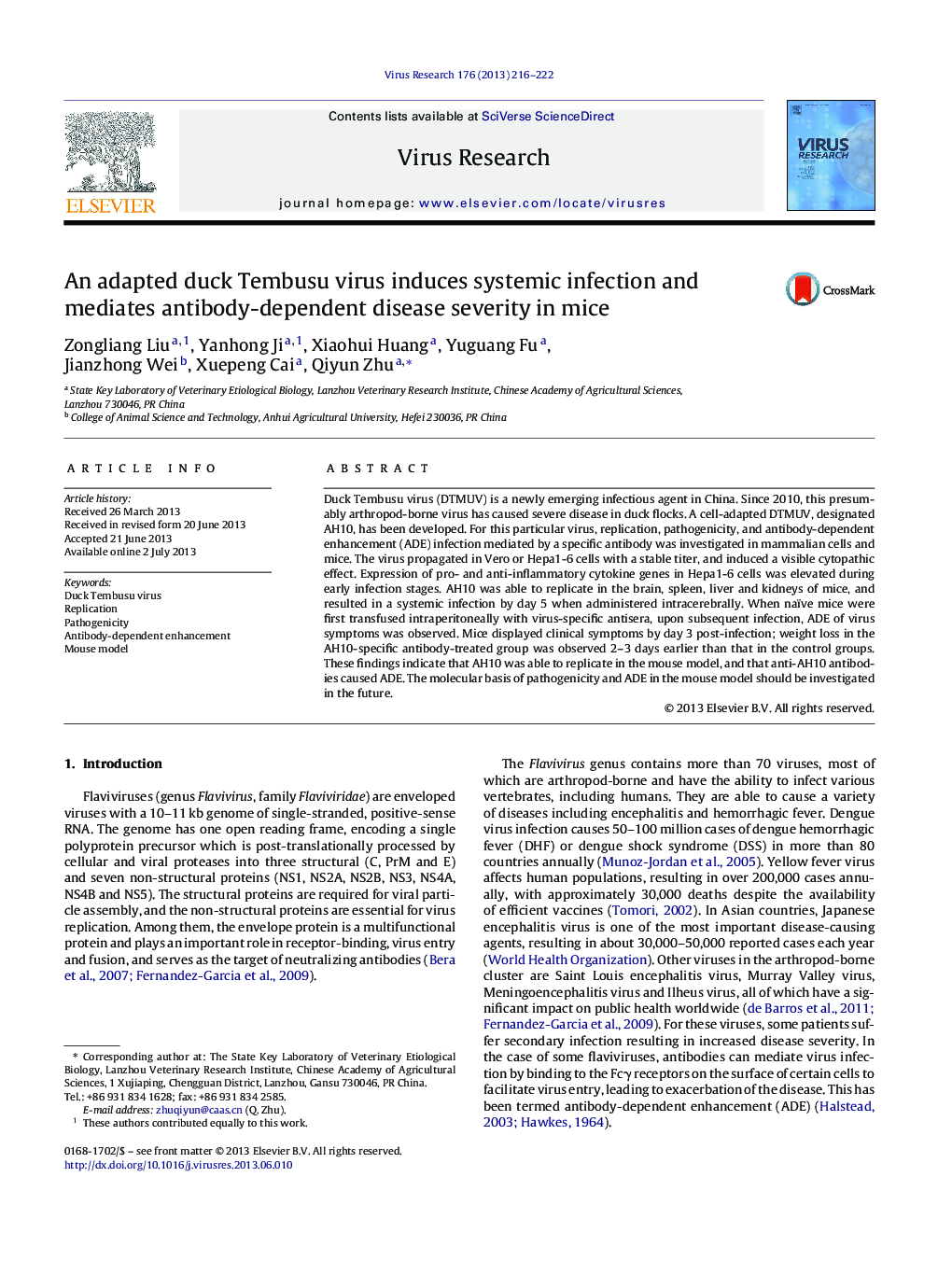| Article ID | Journal | Published Year | Pages | File Type |
|---|---|---|---|---|
| 6142988 | Virus Research | 2013 | 7 Pages |
Abstract
Duck Tembusu virus (DTMUV) is a newly emerging infectious agent in China. Since 2010, this presumably arthropod-borne virus has caused severe disease in duck flocks. A cell-adapted DTMUV, designated AH10, has been developed. For this particular virus, replication, pathogenicity, and antibody-dependent enhancement (ADE) infection mediated by a specific antibody was investigated in mammalian cells and mice. The virus propagated in Vero or Hepa1-6 cells with a stable titer, and induced a visible cytopathic effect. Expression of pro- and anti-inflammatory cytokine genes in Hepa1-6 cells was elevated during early infection stages. AH10 was able to replicate in the brain, spleen, liver and kidneys of mice, and resulted in a systemic infection by day 5 when administered intracerebrally. When naïve mice were first transfused intraperitoneally with virus-specific antisera, upon subsequent infection, ADE of virus symptoms was observed. Mice displayed clinical symptoms by day 3 post-infection; weight loss in the AH10-specific antibody-treated group was observed 2-3 days earlier than that in the control groups. These findings indicate that AH10 was able to replicate in the mouse model, and that anti-AH10 antibodies caused ADE. The molecular basis of pathogenicity and ADE in the mouse model should be investigated in the future.
Related Topics
Life Sciences
Immunology and Microbiology
Virology
Authors
Zongliang Liu, Yanhong Ji, Xiaohui Huang, Yuguang Fu, Jianzhong Wei, Xuepeng Cai, Qiyun Zhu,
